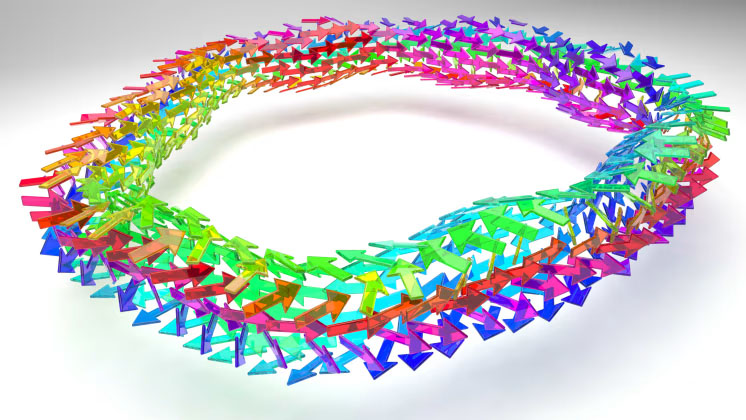| Nov 23, 2023 |
|
(Nanowerk News) Hopfions, magnetic spin structures predicted decades ago, have become a hot and challenging research topic in recent years. In a study published in Nature (“Hopfion rings in a cubic chiral magnet”), the first experimental evidence is presented by a Swedish-German-Chinese research collaboration.
|
|
“Our results are important from both a fundamental and applied point of view, as a new bridge has emerged between experimental physics and abstract mathematical theory, potentially leading to hopfions finding an application in spintronics,” says Philipp Rybakov, researcher at the Department of Physics and Astronomy at Uppsala University, Sweden.
|
|
A deeper understanding of how different components of materials function is important for the development of innovative materials and future technology. The research field of spintronics, for example, which studies the spin of electrons, has opened up promising possibilities to combine the electrons electricity and magnetism for applications such as new electronics, etc.
|
|
Magnetic skyrmions and hopfions are topological structures — well-localized field configurations that have been a hot research topic over the past decade owing to their unique particle-like properties, which make them promising objects for spintronic applications. Skyrmions are two-dimensional, resembling vortex-like strings, while hopfions are three-dimensional structures within a magnetic sample volume resembling closed, twisted skyrmion strings in the shape of a donut-shaped ring in the simplest case (see figure below).
|
 |
| Illustration of Hopfion rings. (Image: Swedish Research Council)
|
|
Despite extensive research in recent years, direct observation of magnetic hopfions has only been reported in synthetic material. This current work is the first experimental evidence of such states stabilised in a crystal of B20-type FeGe plates using transmission electron microscopy and holography.
|
|
The results are highly reproducible and in full agreement with micromagnetic simulations. The researchers provide a unified skyrmion–hopfion homotopy classification and offer an insight into the diversity of topological solitons in three-dimensional chiral magnets.
|
|
The findings open up new fields in experimental physics: identifying other crystals in which hopfions are stable, studying how hopfions interact with electric and spin currents, hopfion dynamics, and more.
|
|
“Since the object is new and many of its interesting properties remain to be discovered, it is difficult to make predictions about specific spintronic applications. However, we can speculate that hopfions may be of greatest interest when upgrading to the third dimension of almost any technology being developed with magnetic skyrmions: racetrack memory, neuromorphic computing, and qubits (basic unit of quantum information). Compared to skyrmions, hopfions have an additional degree of freedom due to three-dimensionality and thus can move in three rather than two dimensions,” explains Rybakov.
|


